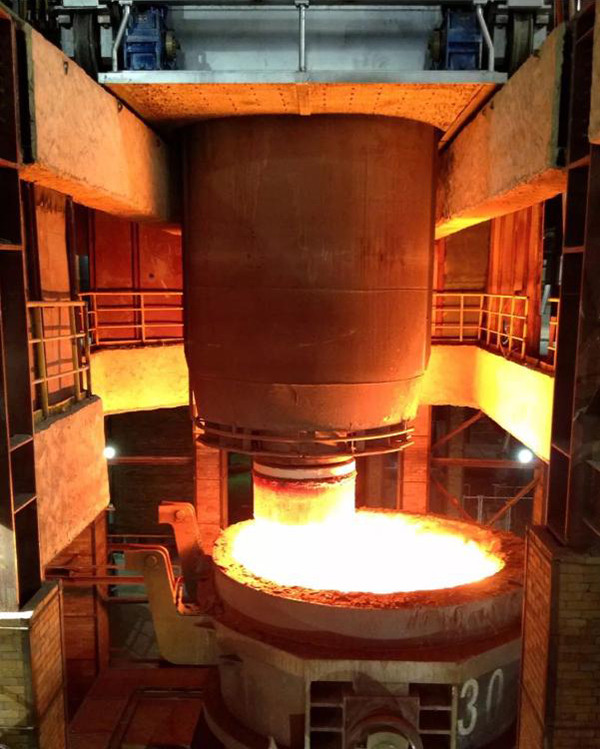RH refining furnace is a vacuum refining equipment. The working temperature of RH refining furnace is generally around 1600℃, and the vacuum degree can reach up to 67Pa. Magnesia-chrome brick is an important refractory material for the lining of RH refining furnace. Its working principle is to use the vacuum state to add alloy elements to react with molten steel to achieve the purpose of changing the composition of molten steel and purifying molten steel; it is mainly used for the secondary refining process of molten steel, and the entire molten steel metallurgical reaction is carried out in a vacuum tank with a refractory lining.
RH refining furnace is a vacuum refining equipment. The working temperature of RH refining furnace is generally around 1600℃, and the vacuum degree can reach up to 67Pa. Magnesia-chrome brick is an important refractory material for the lining of RH refining furnace. Its working principle is to use the vacuum state to add alloy elements to react with molten steel to achieve the purpose of changing the composition of molten steel and purifying molten steel; it is mainly used for the secondary refining process of molten steel, and the entire molten steel metallurgical reaction is carried out in a vacuum tank with a refractory lining. RH refining furnace is mainly composed of upper tank, middle tank, lower tank, circulation pipe and immersion pipe. Among them, the immersion pipe is the key component of RH refining furnace, which is divided into riser and downcomer. Before the molten steel is treated, the immersion pipe will be immersed in the molten steel in the ladle to be treated. The lower part of the vacuum tank is two immersion pipes with refractory lining, and the upper part is equipped with a hot bend pipe. The pumped gas is discharged from the hot bend pipe through the gas cooler to the vacuum pump system and discharged outside the plant.
advantage:
①Fast reaction speed, short processing cycle, high production efficiency, often used in conjunction with converters.
②Small temperature loss. The slag on the molten steel has a good insulation effect, and the temperature drop of the molten steel during the treatment process is small. The temperature drop during normal treatment is only 30~50℃.
③The alloy basically does not react with the slag. The alloy is directly added to the molten steel, with a high yield rate, and the molten steel can be quickly and evenly mixed.
④Good degassing effect, the molten steel reacts in the vacuum chamber, and the molten steel entering the vacuum chamber splashes to form extremely fine particles, which greatly increases the surface area of the molten steel and greatly improves the degassing efficiency.
⑤Strong processing capacity. The continuous circulation of molten steel processing enables it to get rid of the limitations of the net height and size of the vacuum chamber and the ladle, so that it can be used for the processing of a large amount of molten steel and has a large production capacity.

